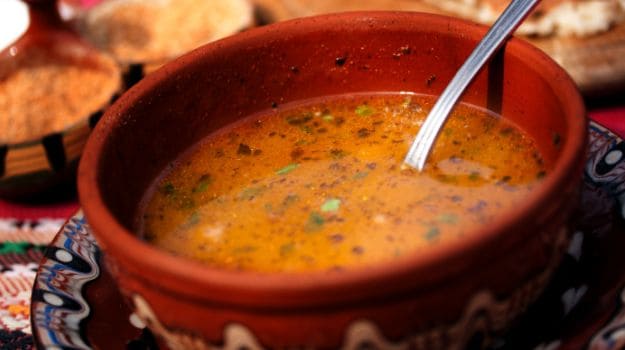[ad_1]
Whenever someone talks about South Indian cuisine, sambar is the first thing that usually comes to mind. This yellow-coloured lentil soup is bursting with flavour and is commonly served with dishes such as idli, vada, and dosa. The next most popular stew in this cuisine is none other than rasam. Both of them are an integral part of South Indian cuisine and have fans all around the globe. However, many people think they are the same and use the terms interchangeably. But the reality is that they differ from each in may ways. The confusion arises because they look the same. After all, they are both yellow in colour and are stews. Diving deeper, you’ll find that there’s a lot that sets them apart. So, what is it that makes them so unique? What are the unique characteristics that you can expect in each of these stews? Find your answers to these questions in this article.
Also Read: 7 Tips To Make Authentic South Indian Rasam at Home

What Is Sambar?
Sambar is one of the most popular South Indian stews. It is impossible to imagine South Indian cuisine without it. It’s a lentil-based stew, made primarily using toor dal. It also contains vegetables in it, such as drumsticks, carrots, potatoes, etc. Apart from this, sambar also includes tamarind (imli), which imparts a distinct flavour to it.
What Is Rasam?
Rasam is another famous South Indian stew, but it’s more like a soup. The base of rasam is prepared using tomatoes, and it includes a pool of different spices. It is known for its spicy flavour and is best enjoyed before a meal. Additionally, rasam is known to have excellent digestive properties as well.
Sambar Vs Rasam: Here Are Some Key Differences Between Sambar And Rasam:
1. Use of different spices
Sambar and rasam are made using completely different spices. The former is typically prepared with spices such as methi, haldi, curry leaves, and mustard seeds. Whereas the latter features spices like pepper and jeera more prominently. Sambar also contains sambar masala in it, which is quite different from rasam masala.
2. Their flavour is not the same
The use of different spices results in different flavour profiles as well. While both are equally flavourful, sambar is usually milder in taste as compared to rasam. This is due to the addition of pepper in rasam. However, this can vary depending on the amount you decide to add.
3. They do not have a similar texture
Another striking dissimilarity between sambar and rasam is their texture. One is much thicker in texture as compared to the other. Sambar has more toor dal in it as compared to water, which gives it this texture. Whereas rasam contains more water than dal, lending it a thin and watery consistency – just like a soup.
4. They are served differently
The way sambar and rasam are served is also not the same. Sambar is typically a part of main-course meals and is enjoyed along with dosa, idli, or steamed rice. On the other hand, rasam is drunk before the main meal. It can be enjoyed with rice as well, but the most common way to have it is as a soup.
Also Read: Idli And Sambar – How This Perfect Combination May Help In Weight Loss

The Bottom Line:
After going through all these points, it’s clear that sambar and rasam are quite different. While they are both South Indian stews, there’s a lot that sets them apart. The major points of dissimilarity that exist between them include spices, texture, preparation method, and overall flavour. It’s important to be aware of these differences so that you’re not confused the next time you have them.
[ad_2]
Source link
